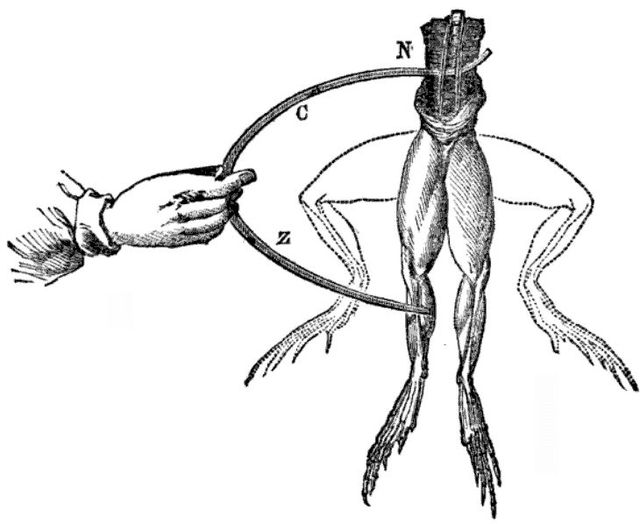Galvanism is a term invented by the late 18th-century physicist and chemist Alessandro Volta to refer to the generation of electric current by chemical action. The term also came to refer to the discoveries of its namesake, Luigi Galvani, specifically the generation of electric current within biological organisms and the contraction/convulsion of biological muscle tissue upon contact with electric current. While Volta theorized and later demonstrated the phenomenon of his "Galvanism" to be replicable with otherwise inert materials, Galvani thought his discovery to be a confirmation of the existence of "animal electricity," a vital force which gave life to organic matter.
Galvanism: electrodes touch a frog, and the legs twitch into the upward position
Johann Georg Sulzer
Luigi Galvani
Alessandro Volta demonstrates his battery to Napoleon.
Luigi Galvani was an Italian physician, physicist, biologist and philosopher, who studied animal electricity. In 1780, he discovered that the muscles of dead frogs' legs twitched when struck by an electrical spark. This was an early study of bioelectricity, following experiments by John Walsh and Hugh Williamson.
Portrait of Galvani at the Palazzo Poggi
Experiment De viribus electricitatis in motu musculari
Electrodes touch a frog, and the legs twitch into the upward position
Luigi Galvani's monument in Piazza Luigi Galvani (Luigi Galvani Square), in Bologna







